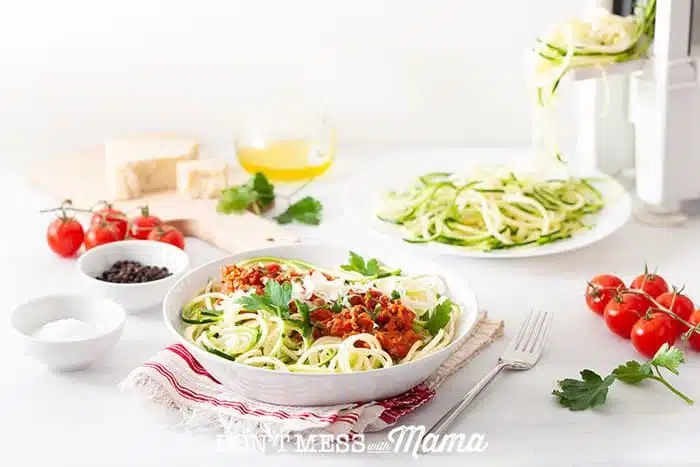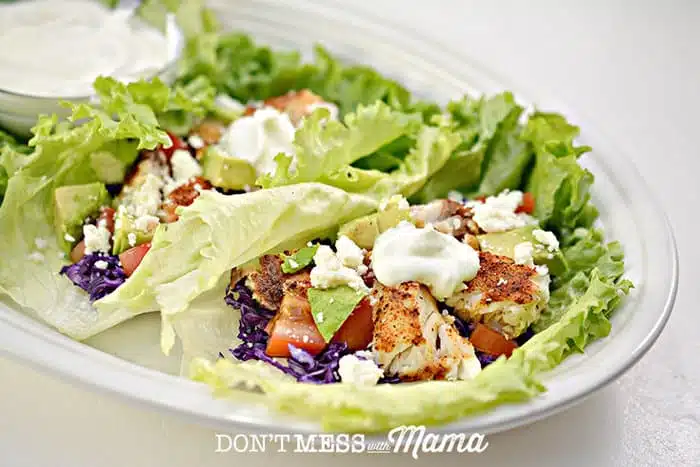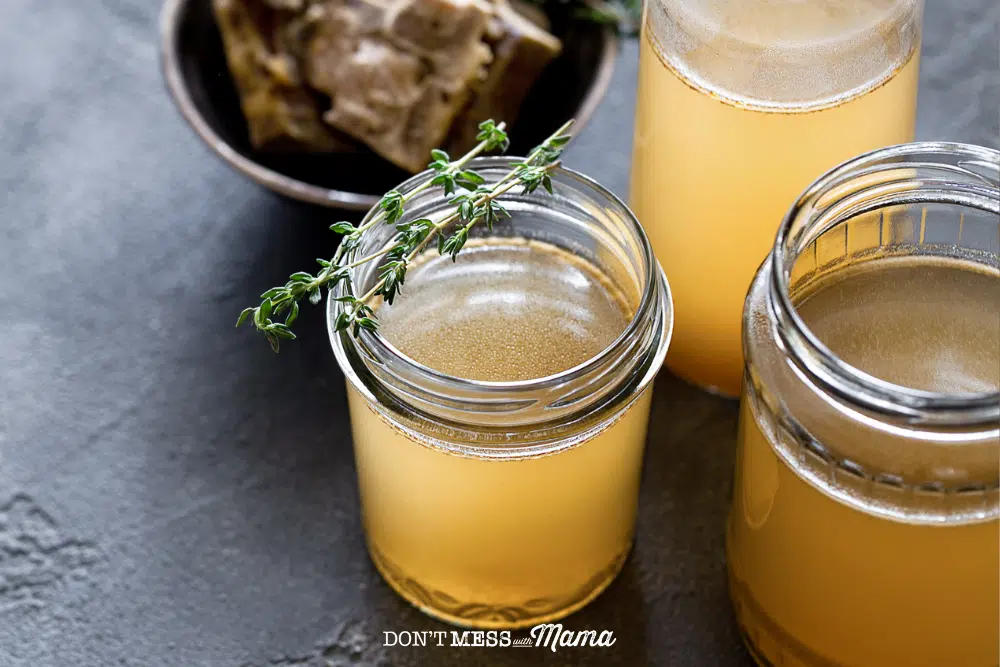15 Easy Gluten Free Swaps for Your Favorite Foods
Love pasta and bread but can’t eat them anymore due to a gluten-free diet? Don’t miss out. Check out these 15 gluten free swaps for your favorite foods.

This post contains affiliate links. Please read my affiliate disclosure.
Here’s one question I frequently hear from those just going gluten free or considering it: Do I have to give up everything I used to eat?
Surprisingly, the answer is no. You just have to figure out how to swap gluten-free alternatives for your old standbys. I’ve got 15 gluten-free swaps for many favorite foods – including pasta, breads, condiments, sauces and more. And be sure to check out all my gluten-free recipes here.
15 Easy Gluten Free Swaps for Your Favorite Foods
1. Swap in Coconut Aminos for soy sauce.
Soy sauce contains wheat gluten. Rather than opt for a gluten-free tamari or soy sauce, try a soy-free and gluten-free alternative like Coconut Aminos (I suggest buying online – it’s $1-2 cheaper than grocery stores). Derived from coconuts, Coconut Aminos has raw enzymes and up to 14 times the amino acid content of soy sauce. Plus, it’s low glycemic and relatively low in sodium compared to soy sauce. Coconut Aminos is fantastic as a substitute for soy sauce in stir-frys, dipping sauces, and sushi.
Be careful with Asian foods though. Sushi, for instance, may seem gluten free but the rolls with sauces and deep-fried in batter most likely contain gluten. The same goes for rice noodles in Vietnamese and Thai dishes. The noodles themselves may be gluten free but not the sauces. Be sure to ask the restaurant before ordering.
You can also make your own Soy Sauce Alternative – it’s an easy recipe.
2. Swap in gluten-free flour for regular all-purpose white or whole wheat flour.
Gluten-free cooking and baking requires a few adjustments to yield recipes that are similar to their gluten counterparts. A reliable all-purpose gluten-free flour mix is essential in every gluten-free kitchen. You can make your own or buy gluten-free flour online. Opt for sprouted gluten-free flours for better digestibility.
3. Swap in homemade gluten-free breads, tortillas and baked goods for white or whole wheat breads and baked goods.
Why not just buy gluten-free breads at the store? These products usually contain more fillers and preservatives than their gluten counterparts. Not to mention they usually cost 2-3 times MORE than conventional white or whole wheat breads. For instance, a 12-oz. loaf of gluten-free bread in a grocery store costs anywhere from $6 to $9. A loaf of 16-oz. white bread costs about $3.
Make your own gluten-free bread for WAY less. You can also make your own gluten-free flour tortillas (or opt for organic corn tortillas), gluten-free banana bread, gluten-free muffins and much more.
4. Swap in lettuce for burger buns, taco shells and tortillas.
There’s a famous fast food burger chain in Southern California known for it’s “double-double burgers”. It’s a favorite in my family – not only because the chain uses grass-fed beef and fresh-cut (not frozen) french fries – but also because they easily accommodate gluten-free customers with a lettuce bun – known as “protein style”.
Borrow this idea for your home. Grill up some grass-fed burgers and use lettuce as the bun. Include toppings such as grilled onions, avocados, nitrate-free bacon and raw or organic cheese for a filling meal without the gluten.
Lettuce is an excellent replacement for Mexican dishes as taco shells (try this Paleo Fish Tacos recipe) and a wrapper instead of flour tortillas for wraps too.

5. Swap in plain potato chips for flavored chips and snack foods.
Flavored chips and snack foods usually contain seasoning or filler ingredients that are gluten based. While there are some gluten-free versions of these foods available, they still often contain a lot of artificial ingredients and preservatives. Opt for plain or simple potato chips instead. These are usually the cheapest option at the store or you can make your own potato chips with just a few ingredients.
Another option is to make your own grain-free cheese crackers with just one ingredient: cheese. I also like these gluten free goldfish crackers.
6. Swap in gluten-free pasta or vegetable noodles for whole wheat pasta.
There are many gluten-free pastas available. I personally prefer rice pasta, but just be careful as it can get soggy fast. I cook it al dente and find by the time I add a marinara sauce it’s the perfect texture. There are other options like quinoa and corn pasta, but I find that many people who are gluten-free still have a sensitivity to these gluten-free grains. Buckwheat is another option but be sure it’s gluten-free, as the ones I often find in stores have wheat added to them.
You can also make your own vegetable noodles using zucchini or carrots with a spiral vegetable slicer (this one is my favorite). It’s a piece of cake to use. Another option is to bake a spaghetti squash for about 40 minutes (cut in half first lengthwise and remove the seeds). Use a fork to flake the squash and make noodles.
7. Swap in homemade ice cream for flavored ice cream.
Ice cream seems like the last place you’d find gluten, but the versions with cookie dough, cookie bits, candy and other chunky flavors usually have gluten in them. Even plain vanilla, strawberry and chocolate ice creams can have gluten as fillers, thickeners or artificial flavors.
To avoid gluten in ice cream, make your own instead. Freeze a couple of bananas (cut into small chunks before freezing) overnight, then put into a food processor for a few minutes to make your own one-ingredient ice cream. Add a tablespoon of organic almond butter or fair-trade cocoa powder (or both) while the food processor is pureeing the banana for a nut butter and chocolate ice cream. This recipe is a snap – plus it’s dairy and sugar free too.
Here are some other options for gluten-free ice cream and popsicles:
- Strawberries & Cream Popsicles (dairy free)
- 10 Ultimate Summer Popsicle Recipes
- 10 Best Paleo Popsicle Recipes
- Coconut Popsicles
8. Swap in almond butter for whole wheat flour to make cookies.
Gluten-free flour can be used in place of white or whole wheat flour to make gluten-free cookies, but almond butter is another option to use in place of flour altogether. Almond butter is low glycemic and a great option for those avoiding grains. Plus, it yields a chewy, moist texture that makes cookies simply delicious.
9. Swap in gluten-free beer or wine for regular beer.
One thing many people miss when becoming gluten free is beer. Fortunately, there are many gluten-free beers available now – usually made with sorghum, millet or rice. A few are made with barley malt, which is then removed later making it within the allowable threshold to be considered gluten free. There’s even a gluten-free home brewing kit available.
Wine is usually a safe bet as it’s made with grapes not barley or hops (which are gluten based). However, during the winemaking process there could be a chance gluten may be in the glue of the oak barrels to age the wine. This apparently is such a minute amount that it shouldn’t cause a reaction.1 But you can always look out for wines specifically marked as gluten free to be safe.
10. Swap in homemade broth, stock or soup for the canned versions.
Canned broths, stocks and soups usually contain a high amount of sodium, MSG and gluten as a seasoning or flavor. These products are nutritionally deficient. Make your own homemade broth instead. It’s cheaper, easier and you’ll get a healthy dose of amino acids, collagen and other nutrients. Make a big batch and store in your freezer to use at your convenience.

11. Swap in homemade salad dressings for store-bought salad dressings.
Take a look at the bottle of salad dressing in your refrigerator. Chances are you’ll see ingredients such as modified food starch on the label. Salad dressings (especially creamy dressings) are notorious for containing fillers, thickeners and flavors that are gluten based.
Rather than buy gluten-free salad dressings (which often contain other fillers and preservatives – not to mention are costly), make your own. Olive oil and vinegar is the easiest dressing to make.
Here are some other gluten-free salad dressings feature real food ingredients:
- Lemon Poppyseed Dressing
- Creamy Italian Dressing
- Creamy Caesar Dressing
- Dijon Mustard Vinaigrette
- Buttermilk Garlic Ranch Dressing
12. Swap in homemade condiments for store-bought condiments.
Like salad dressings, condiments such as ketchup, BBQ sauce, marinades, etc. often contain gluten in the form of thickeners or stabilizers. Gluten-free condiments are available in stores, but often contain a lot of fillers and preservatives.
You can easily make your own condiments with real food ingredients. Here are a few recipes:
- Fermented Ketchup (you can omit the whey – fermenting helps this ketchup last longer in the refrigerator plus fermented foods add nourishing probiotics)
- Dijon Honey Mustard
- Sweet ‘n Smoky BBQ Sauce
- Fresh-Roasted Tomato Salsa
- Chocolate Magic Shell for Ice Cream
13. Swap in homemade spices and mixes over pre-packaged or boxed spices and mixes.
Pre-packaged mixes for gravy, stir-frys, sauces and even bouillon cubes usually have some form of gluten as fillers or thickeners. Watch out for ingredients such as “modified food starch” on labels. Rather than rely on powdered mixes make your own gravy, stir-fry sauce (Coconut Aminos make a great base) and chicken stock.
In addition, seasoning salts and other spice mixes can contain gluten as well. Look for Himalayan Pink crystal salt or Celtic sea salt and mix with your own spices instead. Make your own taco seasoning for instance with spices you probably already have in your pantry rather than buy a pre-mixed version at the store.
14. Swap in nitrate-free, gluten-free meat for processed meat.
This one is always a shocker. Lunch and deli meat, hot dogs, sausages and beef jerky (as well as turkey and vegan jerky) often have gluten in the form of fillers, thickeners, flavoring (most jerky products contain soy sauce as a flavor) or for texture. Diligently read food labels to ensure the meat products you buy are gluten free, and opt for meat that is nitrate-free, grass-fed and organic.
15. Swap in unflavored coffee and teas for flavored coffee and tea.
Love the flavored coffee drinks at your local coffee shop? Those flavored syrups and creamers, blended shake mixes, spices and toppings may contain gluten. You can ask each individual store for nutrition label information to find out whether your favorite drink is indeed gluten free. Or you can order unflavored coffee and mix in creamer and a natural sweetener. Another option is to brew your own coffee at home and add make flavored coffee creamers or top with finely shredded coconut flakes.
Watch out for flavored teas as well. Most flavored teas are gluten free but a handful do contain trace amounts of gluten. Read nutrition labels to make sure your favorite flavored tea is gluten free or make your own flavors to brew with tea.
Need ideas to make your own flavors for coffee and teas? Here are some delicious, gluten-free recipes:
- Pumpkin Spice Creamer
- Almond Milk Coffee Creamer
- Homemade Chai Tea Concentrate
- Dandy Blend and Cinnamon Vanilla Latte
- Peppermint Mocha Latte
- Gingerbread Spiced Bulletproof Coffee
More Posts You Might Like
Did you try this? Don’t forget to rate it and comment below to let me know how it went. You can also FOLLOW ME on Facebook, Instagram and Pinterest.
Want More Recipes?
Check out my new book, Gluten-Free, Real Food Recipes for Kids. I wrote this book with YOU in mind. Parents who want to provide kids with wholesome meals without artificial colors, preservatives and other additives. All the recipes are gluten-free – with many options for grain free or Paleo, dairy free, egg free and vegetarian.
What’s Included In This Book
It’s filled with 130+ pages of content and recipes, including:
- Real food nutrition 101
- Detailed information on how to properly soak and sprout nuts, beans, grains and seeds
- A guide on how to spot chemical additives and what to avoid
- Kitchen essentials and cooking tools
- Tips on how to get kids to become better eaters and help in the kitchen
- 70+ gluten-free recipes – such as snacks and appetizers, beverages, condiments and dressings, main meals, desserts and more
Source: 1
Image credits: Bigstockphoto.com / Olga Miltsova



Thanks for including my recipe in your post…great ideas for folks just starting out with gluten-free foods!
Great recipe! Thanks so much!